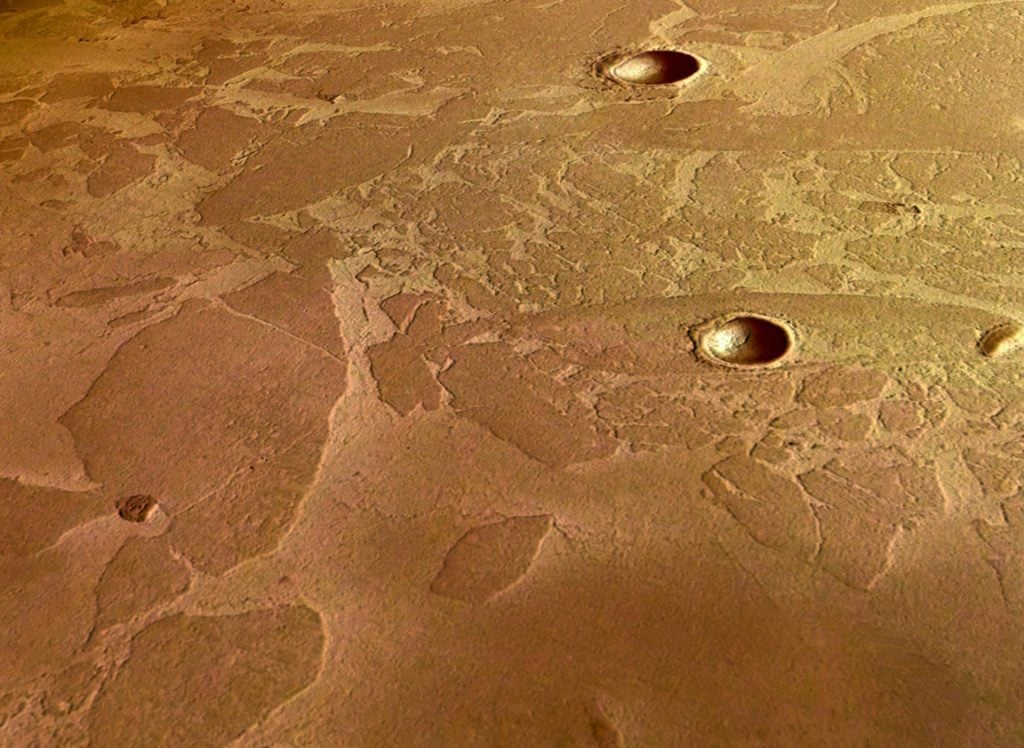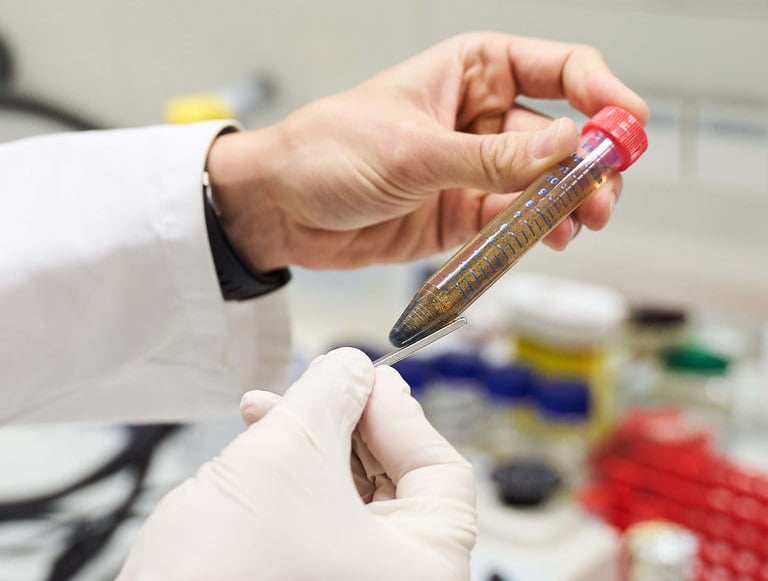When it comes to plans for future missions to space, one of the most important aspects will be the use of local resources and autonomous robots. This process is known as In-Situ Resource Utilization (ISRU), which reduces the amount of equipment and resources that need to be sent ahead or brought along by a mission crew. Meanwhile, autonomous robots can be sent ahead of a crew and have everything prepared for them in advance.
But what about bacteria that can draw iron from extraterrestrial soil, which would then be used to 3D print metal components for a base? That is the idea that is being proposed by PhD candidate Benjamin Lehner of the Delft University of Technology. On Friday (Nov. 22nd), he defended his thesis, which calls for the deployment of an uncrewed mission to Mars that will convert regolith into useable metal using a bacteria-filled bioreactor.
This proposal was the result of four years of research by Lehrner, who has a background in both nanotechnology and biology, that was conducted with the help of the ESA and NASA. The purpose of this research was to find ways to cut the associated costs of missions by creating a system that could enable the creation of mission habitats without the need for crews or sending supplies on ahead.
Lehner's plan calls for an uncrewed capsule containing three components: a rover, a bioreactor, and a 3D printer. The task of collecting regolith is carried out by the rover, which transports it to a bioreactor where it is processed by a species of bacteria known as Shewanella oneidensis. This bacteria is capable of converting Martian regolith into magnetite - a magnetic oxide of iron - that can then be extracted using magnets.
The 3D printer then uses a technique called Lithography-based Ceramic Manufacturing (LCM) to convert the raw magnetite into common metal components used for construction (screws, nuts, iron plates, etc.). This technique consists of exposing a feedstock - in this case, magnetite powder - to a light source (lasers, microwaves, etc), which fuses into a hot slurry that can then be deposited layer by layer to form the desired shapes.
Within the bioreactor, the bacteria are fed with micro-algae, which rely on sunlight and CO2 from the Martian atmosphere to create nutrients and oxygen. They also produce residual organic waste, which the first astronauts to Mars will be able to extract and use as compost. On top of all that, Lehner and his team calculated that a 1400 liter (370 gallons) reactor can produce as much as 350 kg (770 lbs) or magnetite in a year's time.
Over time, a capsule module and its robotic elements would be able to manufacture all the hardware needed to build a crew's habitat. However, Lehrer and his team anticipate that multiple capsules containing multiple rovers (equipped with the bioreactor and 3D printers) could be sent to Mars to assemble all the necessary materials to build a Martian habitat.
At the same time, as Lehrer explained, he and his team factored the issue of planetary protection into their plan:
“After 3.3 years, it would produce more iron than can fit inside the capsule. By sending several of these unmanned modules to Mars, we can produce a good amount of iron in a few years’ time. We want to prevent our bacteria from contaminating the planet, since that could hinder the search for life on Mars."
The solution to this latter issue, they determined, was to equip the capsule with an inflatable sealed chamber on one side which could safely store the 3D printed materials. This would ensure that components manufactured with the help of Earth-born bacteria do not accidentally get into contact with the Martian environment, thus preventing any possible contamination.
All in all, Lehner's process has numerous advantages over conventional construction and other additive manufacturing (3D printing) techniques. For starters, the bacteria that power the bioreactor are capable of reproducing, so they can replenish their numbers over time. They are also lightweight, which makes them easy and cheap to transport, and are capable of withstanding high doses of radiation.
This concept fits nicely into proposed missions in the near future that will attempt to establish a sustainable human presence on the Moon, and then use that presence to mount exploratory missions to locations well-beyond Earth (like Mars). For this reason, the ESA and NASA have already indicated that they would like to develop Lehner's ideas further. Said Dr. Aidan Cowley, the ESA's Science Advisor:
"ISRU is an important technology we need to pioneer in order to make sustainable exploration possible. All approaches should be examined, and in this context, Benjamin's work adds valuable insight into biological processes for such applications. So who knows, maybe this plan will become a reality someday."
A similar idea is currently being investigated aboard the ISS - a bioreactor that relies on algae to provide life support and a steady supply of nutrients. When missions to the Moon and Mars become a regular occurrence, automated robots equipped with 3D printers will likely be a regular feature. ISRU methods that are low-maintenance and sustainable will enhance these missions considerably.
For more information, check out Lehner's thesis on TU Delft's website: " To new frontiers, Microbiology for nanotechnology and space exploration."
*Further Reading: Delft University of Technology*
 Universe Today
Universe Today



